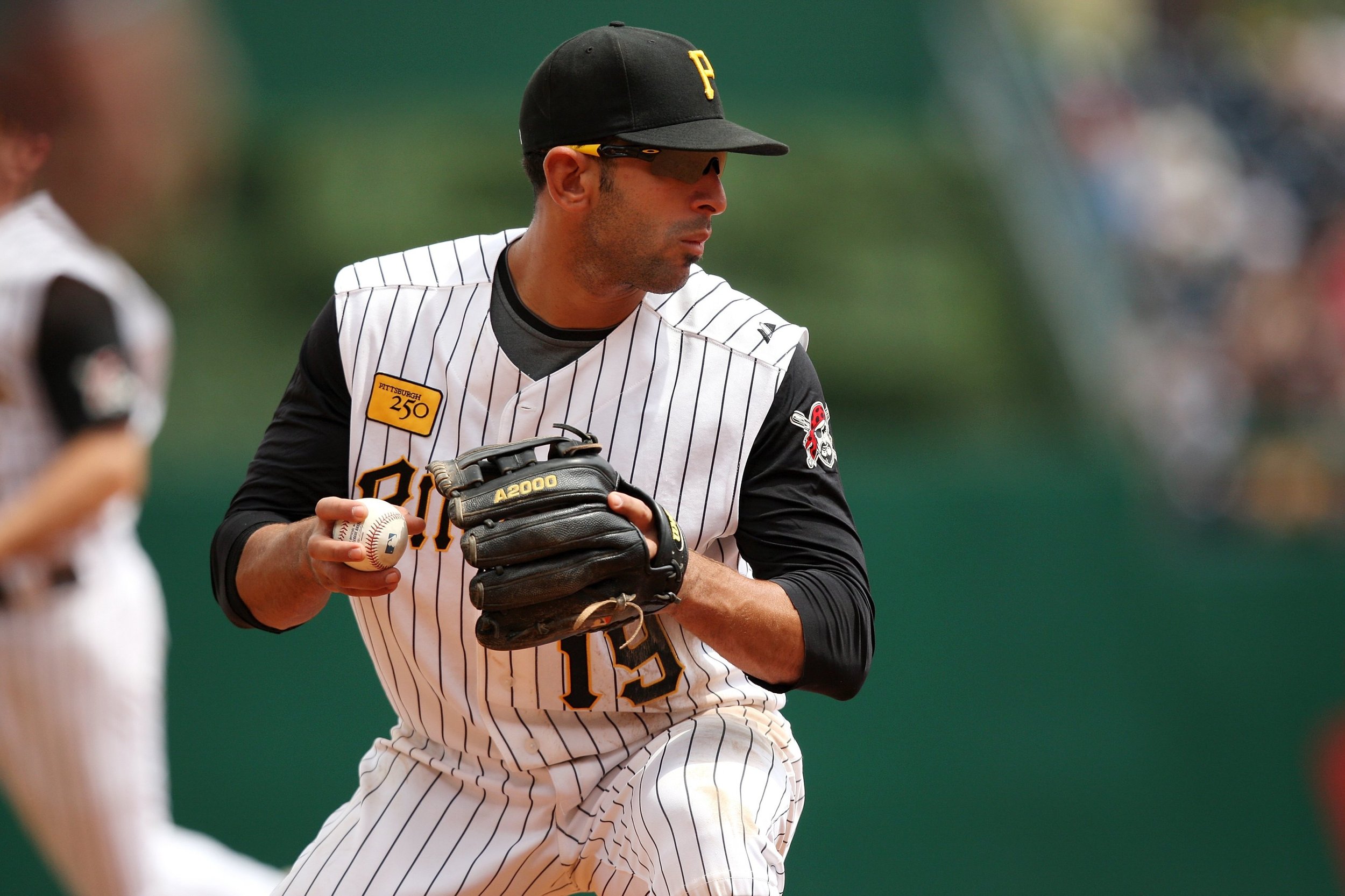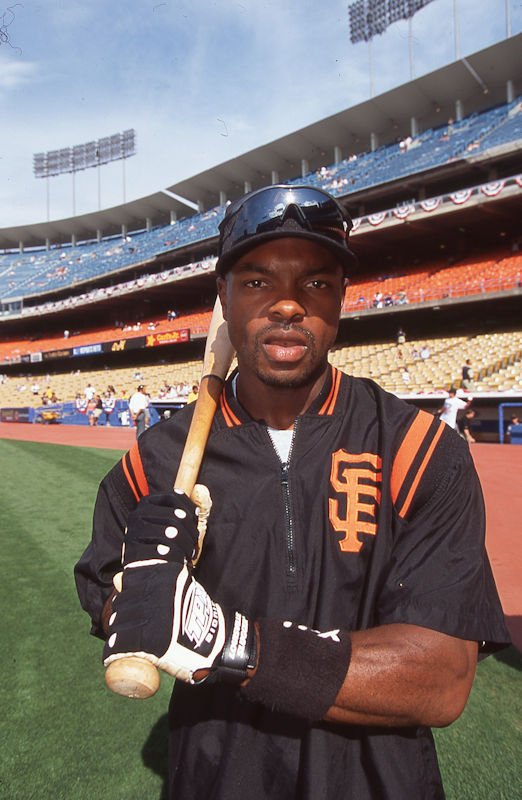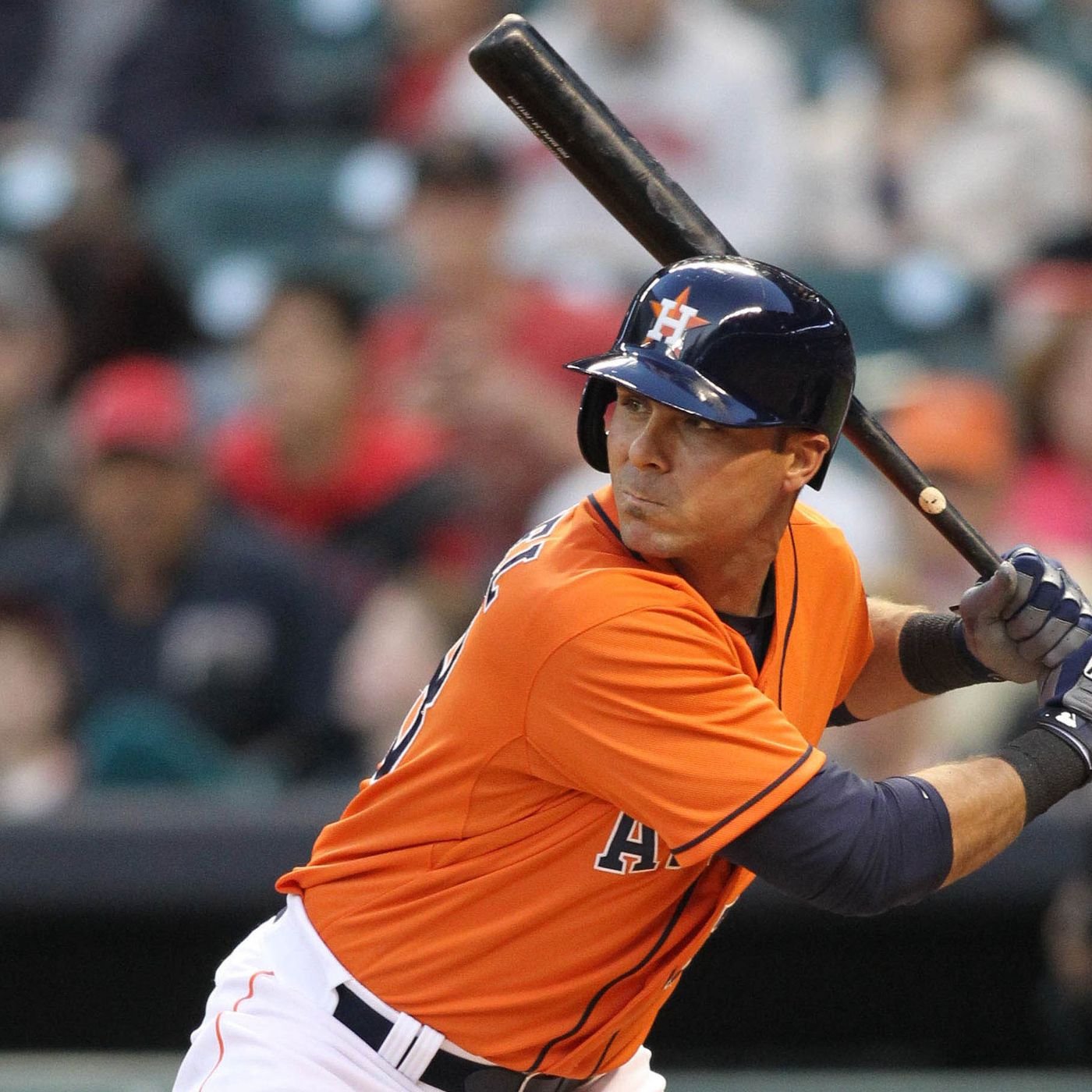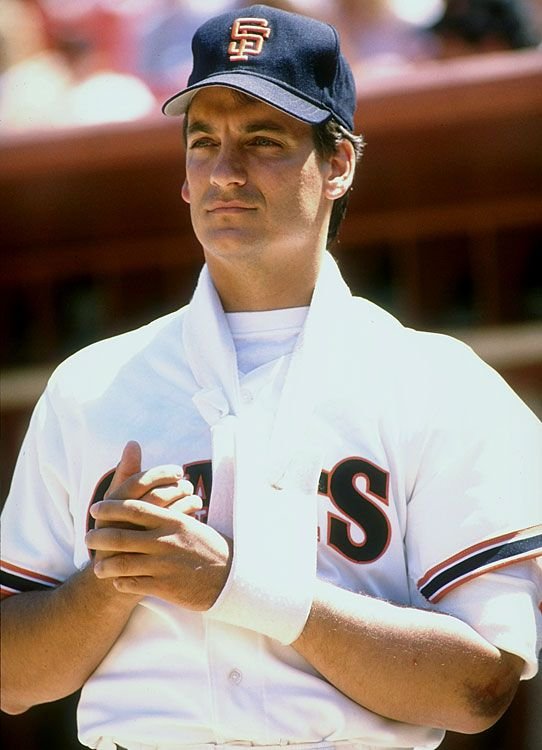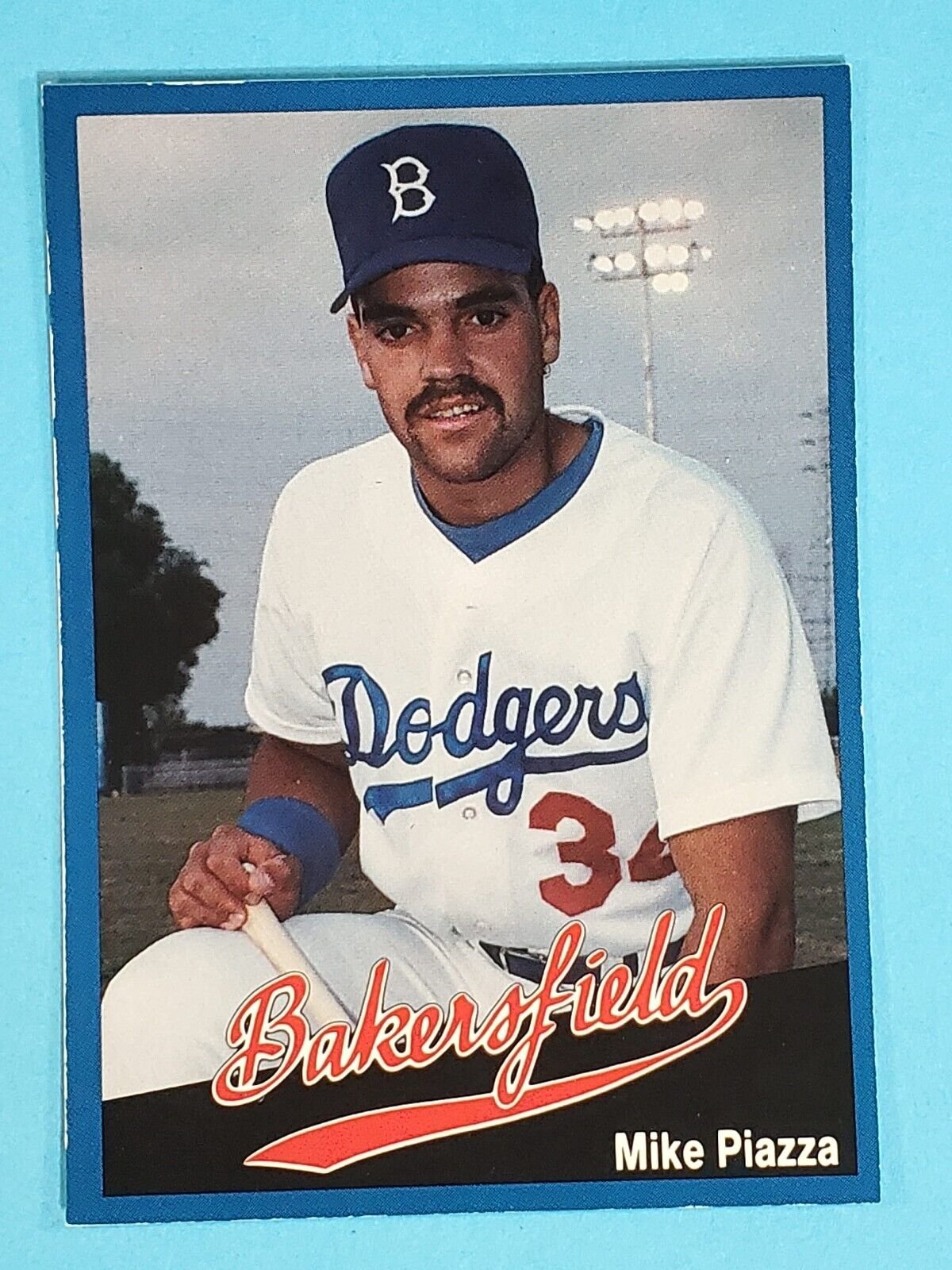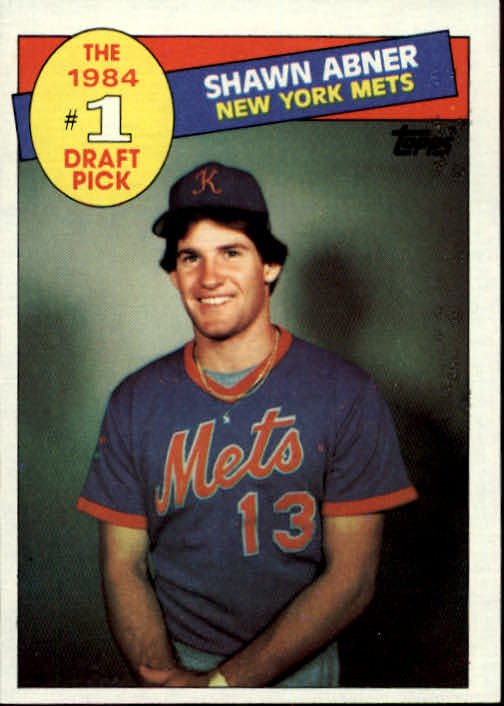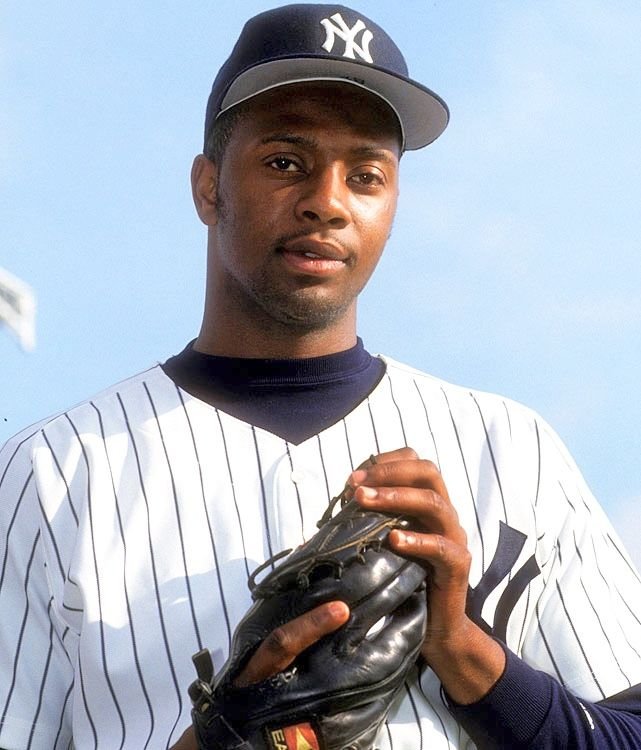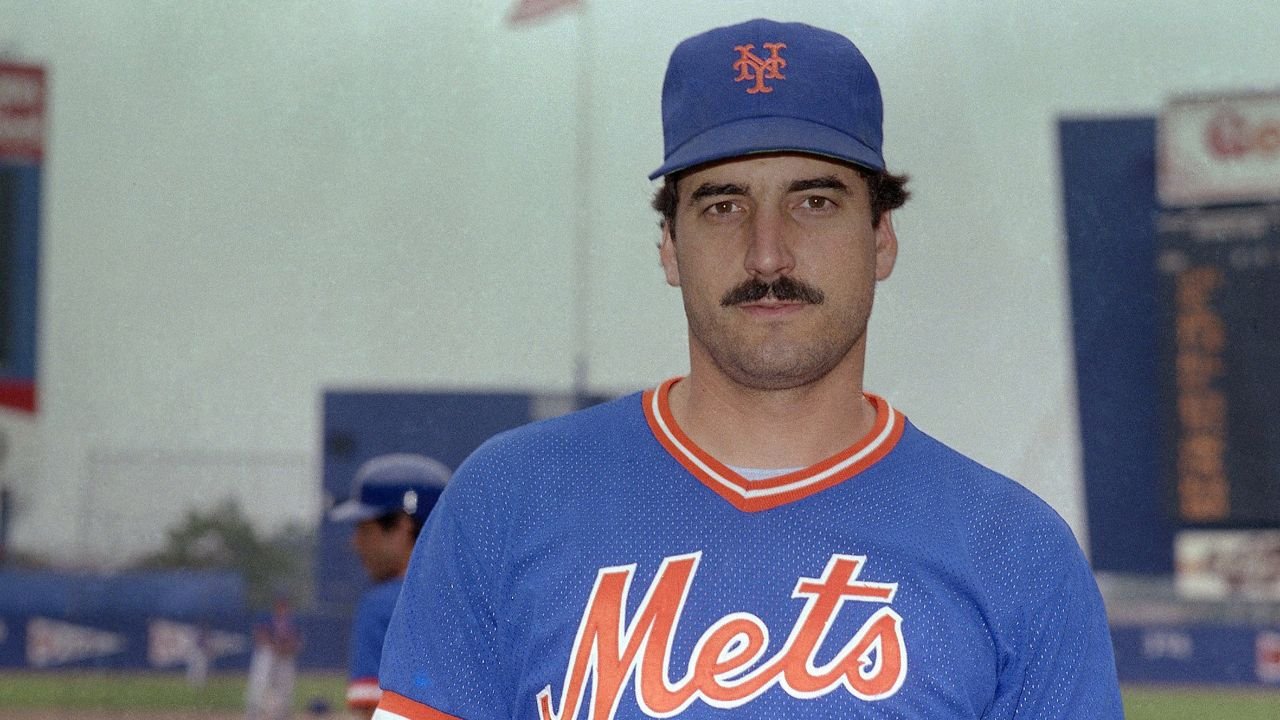There have been thousands of trades in the history of Major League Baseball, some that are barely noteworthy and others that change the entire baseball landscape. Many of these blockbusters deals include massive MLB superstars that are oftentimes dealt for hot up-and-coming prospects. Sometimes the deal works out for both sides, but typically after enough time has passed it is clear who won and who lost the deal. Of course, just like in a baseball game, with a trade, sometimes you win.. and sometimes you win big. Today’s video will be counting down the Top 15 most lopsided trades in MLB history – trades that brought huge value to one side while the benefit to the other side is almost if not completely nil. As always, be sure to comment in that comment section down below your thoughts on the list and any huge lopsided trades I missed that could also have been considered for the Top 20. So, let’s gets started.
#20 - Jose Bautista for a PTBNL!?
Jose Bautista with the Pittsburgh Pirates
In 2008, the Pittsburgh Pirates had a player named Jose Bautista, who had already played for four different teams. He had never made an All Star Team and in 2007, he hit .254 with 15 home runs. The last place Pirates didn’t think he was good enough to be part of their future and traded him to the Blue Jays for a player to be named later. That player ended up being being Robinzon Diaz, who played in just 44 more big league games. Bautista went to Toronto and suddenly transformed, making 6 straight All Star Teams and finishing in the Top 10 for MVP 4 times. He led the league in home runs twice, including 54 bombs in 2010. In 2011, Bautista drove in 132 runs and had an OPS over 1.000. He became an absolute MLB superstar that the Pirates let go for a player to be named.
#19 – The Padres Get Their Face of the Franchise
In July of 2015, the Chicago White Sox made a great move by signing a very young Fernando Tatis Jr. as an international free agent. He had all the tools and looked like a future superstar. Less than a year later, they made a terrible move by trading him to the San Diego Padres along with Erik Johnson for James Shields and cash. Even at the time of the trade, Shields was past his prime and had gone 2-7 with the Padres that year. It was an easy decision for San Diego to dump the struggling Shields and get a young prospect with a massive ceiling. Shields went 16-35 with a 5.31 ERA over 3 seasons with Chicago, never reaching the postseason. Tatis Jr. rocketed through the minors and then lived up to the hype, leading baseball with 42 home runs in 2021. I won’t rank this one too high since Tatis was such a young prospect, there’s no way the White Sox could’ve known he would be this good. Also Tatis Jr. has run into some issues lately with injures and a PED suspension, but at the end of the day, this trade was still ridiculously lopsided and makes the Top 20.
#18 – The Pirates Trade Willie Randolph
The Pittsburgh Pirates had a nice steal in the 7th round of the ‘72 Draft when they selected Willie Randolph. By 1975, he looked big league ready, hitting .339 in Triple-A while stealing 14 bases without being caught. The Pirates at that time were trying to win a World Series and needed pitching, so they sent Randolph to the New York Yankees along with Ken Brett and Dock Ellis in exchange for Doc Medich, who had won 19 games for the Yankees in 1974. Medich won just 8 total games for the Pirates while Willie Randolph helped the Yankees win a World Series in 1977 and go on the play 13 years for the Bronx Bombers. He made 6 All Star Games and had an 18 year career. To add insult to injury, Dock Ellis went to New York and went 17-8 with a 3.19 ERA in 1976.
#17- The Cubs Give Their Rival Lou Brock
Lou Brock with the Cubs
The next trade ends up on the list not only because it involves a Hall of Famer but it also occurred between rivals. In 1964, the Chicago Cubs decided to part ways with a young player named Lou Brock. He had incredible speed but had hit just .257 throughout his first 2 ½ seasons. They sent Brock along with pitchers Jack Spring and Paul Toth to St. Louis for outfielder Doug Clemons and pitchers Bobby Shantz and Ernie Broglio. The Cubs were considered the winners of the deal for picking up Broglio, who had won 21 games in 1960 and had just gone 18-8 with a 2.99 ERA the prior season along with a former 24-game winner and MVP in Shantz and a solid prospect in Clemons. All they had to do is give up a struggling Jack Spring and Paul Toth and this young guy who could run fast, but didn’t look like he had the brightest future. Or so they thought. Brock hit .348 with 12 homers the rest of that season for the Cardinals and never slowed down, going on to make 6 All Star Games and steal a record 938 bases. Brock ended his career with over 3,000 this and was a shoe-in for the Hall of Fame.
#16 – The Mariners Help The Red Sox Finally Win a Ring
It was 1997 and the Seattle Mariners needed some bullpen help. So, they did what lots of teams do and traded away a few prospects for an established MLB player. That player was relief pitcher Heathcliff Slocumb, who had just saved 31 games the previous year for the Red Sox. However, in 1997, he was struggling, with a 5.79 ERA. The M’s traded for him anyway and sent a mid-tier pitching prospect named Derek Lowe along with 1st round pick Jason Varitek, a catching prospect in Triple-A. Slocumb continued to struggle with Seattle and ended up leaving in free agency after 1998, going 2-6 with a 4.97 ERA and just 13 saves throughout a season and a half with the Mariners. Derek Lowe and Jason Varitek, on the other hand, both made multiple All-Star Teams and became key members of the Boston Red Sox, helping them break the Curse of the Bambino and win it all in 2004. During Lowe’s best season, he won 21 games for the Red Sox and Varitek hit at least 20 home runs three times. Varitek stayed with the Red Sox his entire 15 year career and helped them win another World Series in 2007. This trade has to go down as one of the most lopsided of all time.
#15 – The Giants Trade An Elite Closer
While preparing for the 2004 season, the San Francisco Giants, coming off a National League Championship in ‘02 and NL West Championship in ‘03 needed to find a new catcher to replace Benito Santiago, who left in free agency. To do that, they made a trade with the Minnesota Twins, sending Boof Bonser, Francisco Liriano and a young reliever named Joe Nathan to the Twins for A.J. Pierzynski. Liriano made an immediate impact for the Twins, going 12-3 with a 2.16 ERA and making the All Star Team. He went on to have a 14 year MLB career. However, the real loss was Joe Nathan, who became an elite closer, making 6 All Star Teams and closing out 377 games in his career. As for the Giants, they got stuck with Pierzynski, who has a reputation as a clubhouse cancer and it was a match made in hell. Pitchers reportedly hated him and threatened a mutiny if the Giants didn’t trade him. According to one story, pitcher Brett Tomko asked him before a game if they could go over the opposing hitters. Pierzynski ignored him and kept playing cards for 20 minutes. The Giants failed to make the playoffs in 2004. This trade wouldn’t have been so bad if Pierzynski, who was a talented 26-year old catcher, stuck around and helped the Giants. Instead, he was released after the season and went on to be an All Star in Chicago. For a one-year clubhouse cancer, the Giants traded away a borderline Hall-of-Fame closer and solid starter.
#14 – The Padres Trade The Wizard
It’s hard to picture Ozzie Smith in a non-Cardinals uniform but for the first four years of his career, he was a San Diego Padre. Smith finished 2nd in the Rookie of the Year voting and won two gold gloves in San Diego. Ozzie’s agent was very vocal with his displeasure with his client’s salary and got into heated arguments with the Padres owner Ray Kroc. Yes, the McDonald’s guy. Finally, the Padres decided to just trade him, sending him in a package deal to the Cardinals for Garry Templeton, who created plenty of controversies of his own in St. Louis due to his lackadaisical style of play. The Cardinals fans were happy to see him go, but had no idea what they just got in return. Ozzie Smith ended up being a Cardinals legend, winning 11 more gold gloves and making a total of 15 All Star Teams. Templeton did play for the Padres for 10 years, which is why this trade isn’t higher on the list, but he only made 1 All Star Team and was never as good as he was in St. Louis. It ended up being one of the worst trades in Padres history.
#13 – The Marlins Lose Yelich
One team known for moving superstar names for spare parts that never really pan out is the Miami Marlins, and this won’t be their final appearance on today’s list. One of their worst trades occurred just a month after they shipped Giancarlo Stanton to the Yankees – a terrible trade itself - and it involved a young star named Christian Yelich. The Marlins sent him to Milwaukee and in return they got a top prospect named Lewis Brinson along with Isan Diaz, Monte Harrison and Jordan Yamamoto. Brinson was the main prospect in the trade, and he did have some MLB experience with the Brewers but hit just .106 in 47 at bats. The Marlins made the deal anyway and Yelich immediately became one of the best players in baseball, winning the MVP in 2018 and leading the league in batting average, slugging percentage and OPS in 2018 and 2019. Meanwhile, all 3 offensive prospects the Marlins received including Brinson hit under .200 and offered virtually nothing of value. Yamamoto had an 18.26 ERA in 2020 before being traded to the Mets. It was an embarrassing trade for the Fish.
#12 – Ryne Sandberg Comes to Chicago
Many casual baseball fans may not realize that Ryne Sandberg was not a Chicago Cub for his entire career and in fact made his big league debut as a member of the Philadelphia Phillies. Despite hitting .293 with a .352 on-base percentage for the Triple A Oklahoma City 89ers in 1981, the Phillies decided they didn’t need Sandberg since they had Manny Trillo at second base. They traded him to the Cubs along with Larry Bowa, a 5-time All Star who had played for the Phillies for 12 years, for Ivan DeJesus. De Jesus hit .239 for the Phillies while Sandberg went on to have a Hall of Fame Career with the Cubs, becoming one of the greatest second basemen in MLB history.
#11 – The Yankees Trade Away the Crime Dog
In December of 1982, The Yankees traded prospect Fred McGriff along with Dave Collins, Mike Morgan and cash to the Blue Jays for Tom Dodd and Dale Murray. The Yankees traded away a lotto winning draft pick in McGriff, who they got in the 9th round along with 2 other players and even cash for Dodd, who never played a game for the Yankees and ended his career with 3 big league hits and Murray, who won 3 total games for Yankees. Meanwhile, Dave Collins hit .308 for the Jays in 1984 and led the league in triples and Mike Morgan went on to be an All Star and have a 22 year big league career. This would have been a terrible trade for the Yankees even if they didn’t include Fred McGriff, who went on to hit 493 home runs, including a league leading 36 for the 1989 Blue Jays. He has also now, finally, been elected into the Hall of Fame.
#10 – The Padres Trade Away The Crime Dog
You thought we were done talking about the newest Hall of Famer Fred McGriff? Not yet. He has been traded multiple times and credit goes to the Blue Jays, who actually got some value for him, picking up Joe Carter and Roberto Alomar when they traded him to the Padres. Unfortunately, the Padres weren’t so smart, sending him to the Atlanta Braves in 1993 for Vince Moore, Donnie Elliot and Melvin Nieves. I’m ranking this one higher than the Yankees, because at least the Yankees didn’t know McGriff would be a superstar. The Padres knew what they had and still traded him to Atlanta for some spare parts. Fred McGriff helped the Braves catch the red-hot Giants in 1993 to win the division and win it all in 1993. He went on to lead the Braves in homers and RBIs during his tenure. Over in San Diego, Vince Moore never made it to the big leagues. Donnie Elliot went 0-1 and was out of baseball by 1995. And Melvin Nieves hit .207 for the Padres. That’s the risk you take when you sell an established superstar for prospects.
#9 – Bagwell Becomes an Astro For Life
Jeff Bagwell with the New Britain Red Sox
Jeff Bagwell will, of course, always be known as a Houston Astro. However, he was actually born in Boston and grew up a die-hard Red Sox fan. Then, in 1989, he was drafted in the 4th round by his favorite team and hit .333 for their Double-A affiliate, the New Britain Red Sox. It looked like an amazing story in the making until, eager to get some immediate bullpen help, the Red Sox shipped him to Houston for a veteran arm named Larry Anderson. Anderson threw just 22 total innings for the Red Sox and lost Game 1 of the ALCS, in which the Red Sox got swept. Meanwhile, Jeff Bagwell went to win the Rookie of the Year in Houston and have a Hall of Fame career that included 449 home runs and an MVP Award in 1994.
#8 – The Dbacks Land Gonzalez
In 1998, the Arizona Diamondbacks entered into Major League Baseball as an expansion team and with their 9th pick, drafted a talented young outfielder from the Dodgers named Karim Garcia, who had been ranked as high as the 7th best prospect in baseball. At just 22 years old, he was expected to be a mainstay in the Arizona lineup for years, but instead, they surprisingly traded him to the Tigers for a journeyman named Luis Gonzalez, who was usually good for around 10-15 homers a year. Garcia hit just .240 for the Tigers before being shipped off and then bounced around a bit, ending his career with a -3.2 WAR. Gonzalez, on the other hand, became a superstar and made his first All Star Team in 1999, leading the league with 206 hits. His power suddenly exploded as he crushed 26, 31 and then an insane 57 home runs in 2001. He made 5 All Star teams with Arizona and had the game winning hit in the 2001 World Series. This was a trade that didn’t seem unreasonable at the time, as no one could have ever predicted that Gonzalez would be a 5 time All-Star with 57 home run type power, but ultimately it turned out as one of the most lopsided trades in baseball history.
#7 – Mark McGwire Leaves Oakland
By 1997, it was difficult to imagine Mark McGwire in any other uniform besides that of the Oakland Athletics. He had been there for 12 years, made 9 All Star teams and was already approaching 400 career home runs. However, he was unhappy with the A’s overall performance and was ready to move on to a winner as a free agent, so the A’s felt forced to trade him. That wasn’t the problem. The problem was that in return for one of the greatest sluggers of all time, the A’s got pitchers Eric Ludwick, T.J Matthews, and Blake Stein. They initially asked for more – the A’s wanted a more established starter such as Alan Benes or Matt Morris along with top prospect Manny Aybar, but the Cardinals refused. Eventually, the A’s relented and made the deal. Ludwick and Stein won a total of 6 games with the A’s. T.J. Mathews stuck around longer, but he had a 4.78 ERA in 5 seasons for Oakland. Meanwhile, Mark McGwire went on to make headlines as he broke the single season home run record in 1998 and hit 220 home runs with St. Louis. Of course, these accomplishments have since been tainted by the revelation of the steroid era, but the trade of McGwire to the Cardinals is still one of the most lopsided in MLB history.
#6 – The Mets Give Up On Ryan
One of the best draft picks of all time was Nolan Ryan, who was taken in the 12th round by the Mets in 1965. Ryan had insane strikeout stuff, but struggled with his control and went 10-14 in 1971. During the 1971-72 offseason, the Mets decided to package him up with Leroy Stanton, Francisco Estrada and Don Rose and send him to the California Angels for a 6-time All Star named Jim Fregosi. Unfortunately, Fregosi never made another All Star team again and hit .232 for the Mets in 1972. By 1973, he was out of the organization. Most of the 4-man package didn’t really work out for the Angels either, with one obvious exception. Nolan Ryan hit his stride in California and averaged 21 wins per season for his first 3 years there, suddenly making All Star Teams and receiving Cy Young votes. He threw 4 no-hitters with the Angels and ended up with 7 over his career, which also included 324 wins and a record 5,714 strikeouts. It’s amazing that in order to pull of the trade of Nolan Ryan for Jim Fregosi, it was the Mets who had to throw in three additional players. It was without a doubt the worst trade in New York Mets history.
#5 – The Expos Trade The Cy Young Award Winner
Another Hall of Famer like Fred McGriff who was involved in not one, but two horrible trades, is Pedro Martinez. An honorable mention would be the Dodgers sending him to the Expos for Delino Deshields. It was a terrible trade, but at least they didn’t know just how good he would become. However, in 1997 The Expos traded Pedro, who had just won the Cy Young Award with a 1.9 ERA and 13 Complete Games to the Red Sox for Carl Pavano and Tony Armas Jr. They were obviously afraid he would leave in free agency, but how they only got two average prospects in incomprehensible. Pavano was a 13th round pick who showed some decent stats in the minors but went 24-35 for the Expos. Armas Jr. was in the low minor leagues at the time of the trade and ended up posting a 4.45 ERA during his time with the franchise. Martinez, on the other hand, went on to win 23 games in 1999, two more Cy Young Awards and have a Hall-of-Fame career. It is understandable that the Expos would trade a Cy Young Award winner if they thought he would leave in free agency, but you absolutely have to do better than that.
#4 – Marlins Send Miggy to Detroit
The Marlins have made some bad trades, but none worse than the December 2007 deal that sent Miguel Cabrera and Dontrelle Willis to the Tigers for a package of prospects. That package included six players, one of whom never made it the majors and the rest who did little to nothing for the Marlins, although Andrew Miller went on to be a good reliever for other teams. Another prospect, Cameron Maybin, ended up back in Detroit later on, hitting .315 for them in 2016. Willis didn’t do much in Detroit, but The Tigers did get a franchise player in Miguel Cabrera, who won four batting titles, back to back MVP’s and a Triple Crown. He has established himself as a future Hall of Famer and will certainly wear a Tigers hat on his plaque. It is amazing that not one of the 6 prospects ever made much of an impact in Miami.
#3 – Tigers trade a Detroit-Native and Future Hall of Famer To Atlanta
Although Detroit certainly won the Miggy deal, they lost this next one. It is another example of a team trading away a young player who rooted for them as a kid. In this case, it’s John Smoltz, who grew up in Detroit as a hardcore Tigers fan. Appropriately, he was drafted by the Tigers, but although he had a great arm, his minor league numbers weren’t exactly eye popping. They decided to let him go for a more experienced big league arm and traded him to the Braves for Doyle Alexander. Alexander admittedly pitched well in Detroit for a little while until he led the league in losses in 1989 and retired. However, the Tigers lost out on a superstar and John Smoltz went on to become both an elite starter and closer for the Braves, becoming the first player in MLB history to record 200 wins and 150 saves. He helped Atlanta win a World Series in 1995 and won the Cy Young Award in 1996. At the time of this trade, it seemed like an easy win for the Tigers but in hindsight, it’s one of the worst trades in MLB history.
#2 – The Expos Trade The Big Unit
In the second round of the 1985 MLB Draft, the Montreal Expos made a great selection, taking a 6’6” beast in Randy Johnson. He had insane strikeout stuff but was also very wild, striking fear into the batters who dared to step into the box against the Big Unit. He got off to a rough start in the big leagues in 1984, going 0-4 while walking 26 batters in 29 innings. It’s understandable why the Expos decided to trade him for a more established and trusted starter. They sent him, along with Gene Harris and Brian Holman, to the Seattle Mariners for Mark Langston and Mike Campbell. Langston had a great career but only played a partial season with Seattle before signing with the Angels. Mike Campbell stayed in Triple-A Indianapolis the rest of the year before leaving, having never played a game with the Expos. Meanwhile, the Seattle Mariners picked up an all-time legend. It took a couple years to really figure out his command but once he did, Johnson became the best pitcher in the game, racking up 5 Cy Youngs, 10 All Star Selections, and 4 ERA titles. He helped the Mariners make the playoffs twice before moving onto Arizona, where he won a World Series ring and co-World Series MVP with Curt Schilling. He was inducted into the Hall of Fame in 2015 on his first ballot. This was without a doubt one of the worst trades in MLB history.
#1 – Boston Trades The Babe… For Cash
Babe Ruth with the Boston Red Sox
It was one of the most stunning moves in the history of the game. Back in 1919, the Boston Red Sox had on their roster the best baseball player to ever walk the Earth. His name was George Herman “Babe” Ruth. He was one of the best pitchers in the game, but even better at hitting. So much better, in fact, that the Red Sox moved him to the outfield and in 1919, he hit a then-record 29 home runs. This was a number that was unheard during this era. He also had a .322 batting average and was clearly on the verge of becoming an absolute baseball God that would change the entire game. So, what did Red Sox owner, Harry Frazee, do to take advantage of this once-in-a-lifetime opportunity? He made a deal with Yankees owner Colonel Jacob Ruppert and traded Ruth to the Yankees for $100,000, which would help him fund his plays and musicals. At least he knew there was no point trying to trade Babe Ruth for players.
“I should have preferred to have taken players in exchange for Ruth, but no club could have given me the equivalent in men without wrecking itself, and so the deal had to be made on a cash basis.”
-Harry Frazee
When the Yankees got Babe Ruth, they weren’t the Yankees we know today. They had never even been to a World Series, much less had won any. They were by far the least popular team in New York and didn’t even have their own stadium – The Giants were kind enough to let them use theirs. Ruth changed all that and the Yankees began a dynasty that lasted for decades. Ruth’s popularity allowed the Yankees to build a new stadium and they started to attract more talent, more fans and, of course, more money for the owners. There is a high likelihood that if Babe Ruth never came along, the Yankees would have moved to the west coast instead of the Giants or Dodgers. They could’ve been the San Francisco Yankees. Instead, the team went on to win 27 world championships and counting and are a team of legends that began with Ruth and was followed by the likes of Lou Gerhig, Joe Dimaggio, Mickey Mantle, Don Mattingly, Derek Jeter and Aaron Judge. Sadly, the effect on the Red Sox seemed to be just the opposite, as the Curse of the Bambino initiated a massive drought in World Series Championships for the Red Sox, who at the time of the trade, already had four rings. They would not win another for 86 years.


